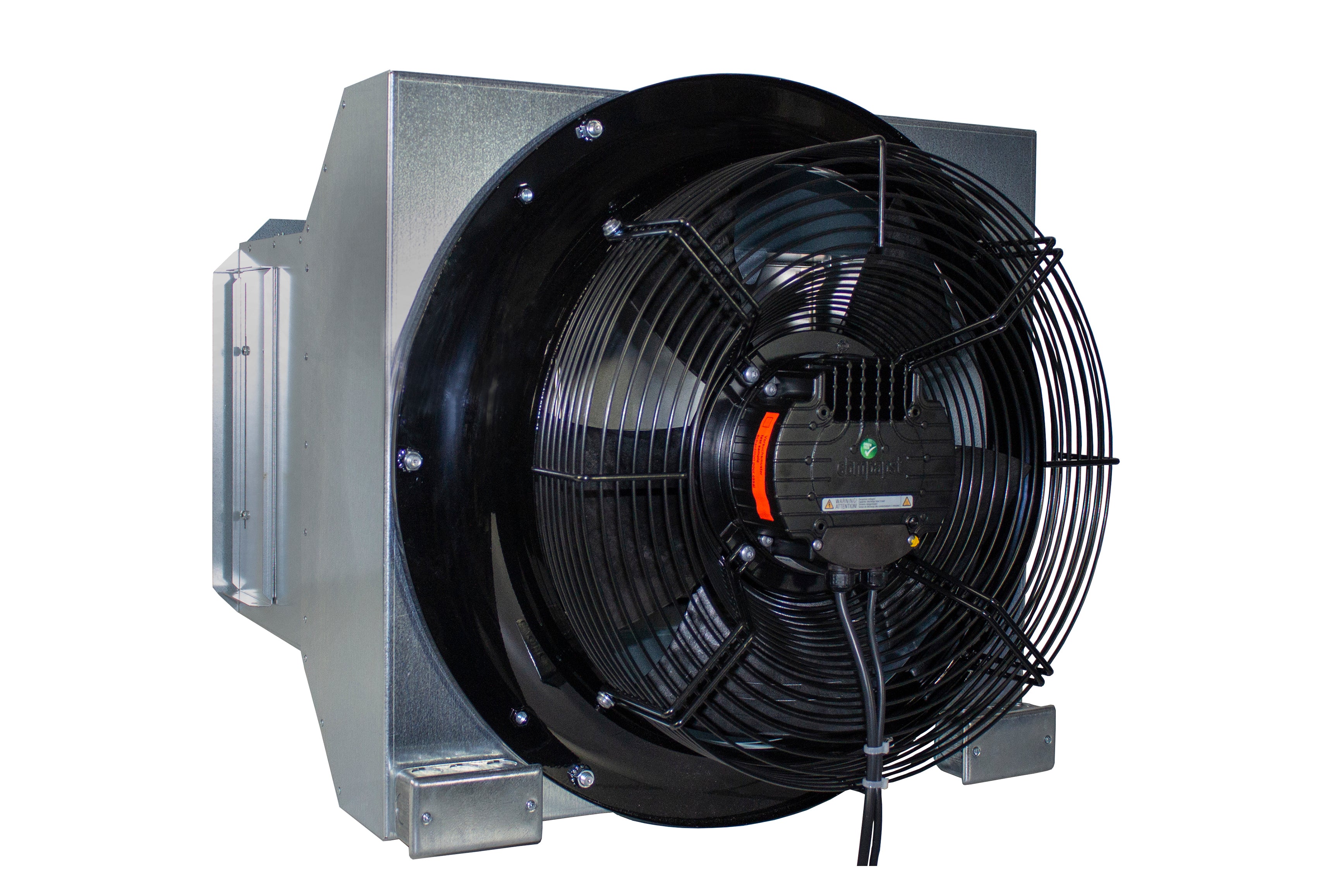Evaporative Air Cooler Guide
These units may not be for every household, but if you live is a dry climate, they could be ideal for your needs. Let’s take a closer look at these units to see if they are the right options for you, your home, and your family.

What is an Evaporative Air Cooler?
There are many ways to cool the air around you, but one of the most interesting and less-common methods is an evaporative air cooler. Also known as evaporative air conditioners or swamp coolers, these appliances work by pumping water onto a reservoir or cooling pad, which holds the water in place. Then blown by a fan, air is passed over the water, and as it passes, it picks up some of the moisture. Through the process of evaporation, some of the water is picked up by the air, which allows the air to cool. By using this natural process of evaporation, evaporative air coolers can cool the air by as much as 20 degrees Fahrenheit, under the right circumstances.It really is that simple. By holding water and passing air over it, evaporative air coolers can be as effective as air conditioners in many areas, providing air conditioning at a faction of the cost and effort.

Benefits of an Evaporative Air Cooler
There are many benefits that users enjoy when they have a swamp cooler in their home, but the #1 advantage remains the energy efficiency. These units essentially have a fan that needs to be operated and little else. There is not nearly as much complex technology that you find with an air conditioner, so they are more affordable to operate on a regular basis. This not only means that you will spend less on your energy bill, it also means that you can use less energy for cooling as a whole, which is good for the environment.Evaporative coolers also provide fresh, clean air. This can be beneficial to many users who want to ensure the air quality in their home is as high as possible.
Installing an evaporative air cooler is also less expensive compared to traditional A/C. In most cases, they consist of simple appliances that are portable and can be used in any room. You won’t have to install special duct work or have a technician provide installation services; simply purchase the unit, take it home and use it properly and you’ll get cool air throughout your house. Not only is installation easy (or non-existent) but the maintenance is minimal as well.
Adding Moisture to the Air: Great for Some, Not for Others
There’s an important factor in evaporative air coolers that makes it ideal in some locations but not a good choice in others. Since these units actively humidify the air to create a cooling effect, they are rarely useful in areas that already have high relative humidity levels. The southeastern and Midwest, for example, can experience high levels of relative humidity in the summer months; it would not be practical to actually add moisture to the air.However, dry, hot areas, such as Arizona or New Mexico, will generally benefit the most from evaporative air coolers.
Sylvane, a supplier of air quality, cooling, and heating products, provides a useful map of areas that will best benefit from evaporative air coolers. According to their map, most of the western states will find evaporative coolers to be extremely beneficial. This includes a large portion of the Pacific states, as well as the majority of the Rocky Mountains region. There is also a slim line that runs south from western North Dakota into western Texas (and also east into northern Michigan) that would be “less than ideal” but would still experience some benefits from evaporative air coolers. The rest of the county, however, would basically not have any use of these units; either because it is already to humid, or because the heat is so high that evaporative air coolers would simply not provide the needed benefit.
Evaporative Air Coolers Require Ventilation
Because evaporative air coolers add moisture to the air, quality ventilation is required. Ventilation and the free flow of air is important because it can make the unit more effective while also ensuring that the home’s internal humidity levels do not become too high. Proper ventilation creates pathways for air to enter into the home, and if ventilation is consistent, the evaporative air cooler will perform at a higher level.The simplest way to ventilate your home is through the use of open windows and doors. You can create a cooling cross breeze by simply opening windows throughout the home, which will allow for dry air to come into the home and be cooled by the cooler. If the air in the home is too damp, the cooling effect of evaporation will not occur and you will be left with an uncomfortable and hot home. Excessive moisture can also occur without ventilation, which could lead mold and other problems.
Ventilation in a home can also be enhanced by using fans. Ceiling fans, floor fans, and air circulators can all increase the flow of air, which will enhance the overall performance of the cooler.
You could also consider using exhaust fans when running the air cooler. Exhaust fans in the kitchen and bathroom ventilate air from the living space and send it outward. Keeping these fans running will ensure that air continues to flow from one space to another.

To ventilate more completely, a whole house fan will quickly remove the moist, stale and replace it with cooler, cleaner air from the outside. And do so at up to 90% lower cost than an air conditioner.







